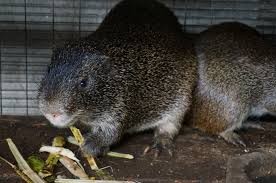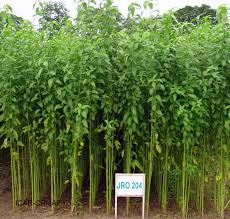GRASS-CUTTER FARMING IN NIGERIA.
MARKET
Grasscutter is considered a delicacy within our environment and there's hardly enough to meet demand. In addition there's an increase in foreign demand for the animal especially from Asian market.
RISK
The risk level of cane rat farming is low compared to other livestock. The input is low and returns is high as they are very prolific animals and require little care when compared to other livestock.
FEEDING
For every livestock farming feeding cost usually surmount to about 70% of running cost. Which is what makes grasscutter farming attractive. The cost of feeding is really low as they feed on anything vegetable. They would eat elephant or napier grass, guinea grass, congo grass, gamba, alfalfa which are all readily available in our environment. They would equally eat tubers such as cassava, sweet potatoes, yams, fruits such as pawpaw, banana, plantain, corncobs sugar cane, hydroponic fodder, formulated concentrate feeds etc. Cheaper was of feeding grasscutter wutb maize stalks, stems, cobs and so on. You can liaise with any corn seller in your environment to collect the corn stalks, peels and cobs. She'll gladly give them away as its waste to her. The sugar cane seller liaise with any mallam selling sugar cane for his waste. He give you his waste free and you'll get the sugar canes cheaper. Children in your environment would gladly source grasses for stipends. Note, when feeding, do not feed with wet grasses; collection should be done a day prior to feeding so as to let it dry.
SELECTION CRITERIA FOR COLONY
The animals should have attained sexual maturity (6 months for male 7 for female)the male animal should be docile, should have attained a weight of at least 2.5-3kg, should have a well formed penis. The female must have 2 teats and should weigh 2-2.5kg. All animals must be healthy and agile without any physical defect.
REPRODUCTIVE LIFE CYCLE
A male grasscutter is called a buck and a female a doe. A family/colony consists of 1 male and 4 females. The gestation period is 154-174 days. The pups are born precocious. Age of sexual maturity is 6-7months for male and 7-8months for female. Litter size is 5-8 babies per litter with two cycles per year
ALSO READ:- https://doagricitpays.blogspot.com.ng/2017/10/how-to-build-pvc-rabbits-hutch.html?m=1
SEXING IN GRASSCUTTER
On first appearance is a little bit difficult to differentiate a male from a female animal. They generally appear same to a newbie farmer, seasoned farmers however would tell you a male is generally bigger than a female, the head shape in male is more rounder while the female is angular, these two means can be confusing for some. Sexing is done mainly by the genito-anal spacing. In the female, the space between the vagina and the anus is close and the appear in continuum while in male animals there's obvious spacing between the anus and penis. This is the major means of sex differentiation in grass cutters. Yes, its always advised to have extra rooms. The females enter ovulation in presence of a male, so most times you have synchronised pregnancies at that point, you remove the male from the group. Any female that isn't pregnant, you introduce to the male.
Sometimes there would be protrusion of the vaginal wall. You'll see something like blood or it would be very reddened, this is a sure sign that the female has been mated. This sign doesn't last for very long though between 6-8hrs, so it's important to check your animals from time to time. It may be time consuming to do so, but in practice pregnancy determination is more important than heat detection.
Grasscutters are induced ovulators - they ovulate and come on heat in presence of a male and don't have a particular season they breed meaning breed all year round.
Mating is usually confined by swelling of the vagina.
Pregnancy is manifested by a definite change in body weight four weeks after mating, the animals look bloated and add visible weight it's the easiest means of pregnancy detection and doesn't require expertise , the pregnant females have protuded stomachs which become visible at 4-5 weeks after mating. Pregnancy is equally detected by i vaginal bleeding which comes and goes, and palpation of foetuses in utero five weeks after mating. Palpation requires expertise, to conduct abdominal palpation, the animal is partially restrained in a net while the attendant holds the animal gently on the shoulders. The examiner holds the animal by the tail and places one arm between its hind legs, moves the head gently until animal’s lower abdomen is cupped in the hand. The uterine horns are gently passed in between the fingers and the fetuses are felt as small, slippery marbles during the early stage of gestation but gets progressively larger and elongated as the pregnancy advances. At the early stage, the diagnosis is categorized as tentative due to the semblance of the fetuses to faecal pellets, which would be felt during the palpation.
ALSO READ:- https://doagricitpays.blogspot.com.ng/2017/09/feed-formulation-for-both-layers-and.html?m=1
Parturition is imminent within three days when the expectant mother stands on only its hind legs this is known as the penguin posture, and it is a day away when the change in posture is combined with frequent looks at the lower abdomen. The animals usually give birth standing on the hind limbs.
Now in all this care has to be taken so that the animals don't abort. When animals are mated it's important to remove the male animals when the females are pregnant. They should be kept in separate cages and animals that don't show signs of pregnancy after 5weeks can be reintroduced to the male. Some farmers have a mating cage and put the females with the male when they are on heat.
Pregnancy is between 148-158 days and the animals are born precocious, they are weaned after 4-5 weeks.
You can use an empty colony den for whelping, dried grasses are not really necessary as long as the holes on the net are not large enough for the pups to slip through. As soon as they are born they start running around, they have hairs and a literally miniature adults, unlike other animals that are born blind, without hair and seemingly defenceless.
DEMAND FOR GRASSCUTTER IS NOT BEING MET
In Africa, Nigeria is the largest importer of frozen fish (FDF, 2002) and requires approximately 1.5million tons of fish and meat annually to meet demand.
Currently, domestic supply is about 0.5 million tons (Over 30% of demand) including massive importation which gulps over N20 billion annually. Preliminary market analysis according to IFC suggests that an additional 25,000 tons or 100% increase in current production can be easily absorbed.
Cattle which could have been another major source of protein, is being drained by desert encroachment, pest attacks and other factors.
ALSO READ:- https://doagricitpays.blogspot.com.ng/2017/08/how-to-make-millions-from-banana-and.html?m=1
Mini-Livestock production like grasscutter, guinea pig, Porcupine, snail and rabbit is thus placed on the spotlight as the best option for food security in the country today.
Grasscutter farming is a profitable business with high probability of recouping original investment. Consequently, expansion in grasscutter farming will not only generate jobs and income for farmers, but will also create small-scale business for market mammies and restaurants.
The grasscutter-raising business is adaptable to any location. Many owners use shed, backyard, and old barns as sites for grasscutter hutch. With the Red-Meat situation what it is and the economy in turmoil now is a good time to consider the grasscutter business. The best way I know to put good food on the table and a more naira in your pocket without a large investment, is raising grasscutters. The Profits can come in many ways: you can sell your grasscutters live or smoked to restaurants, the manure for fertilizer to horticulturist or for worm growing, even the breeding family of one-male and four-females can bring huge money. The white-meat, however, is by far the most important product.
Grasscutter is a member of the rodent family. The main reason grasscutter are now being preferred by some farmers for rearing purposes is because it is easy to house and you don’t buy food for them like you do in poultry, fish and pig farming. They are very prolific a animal, that is they can produce many litters. In this category, they are next to pigs and rabbits.
The business of grasscutter farming in Nigeria is growing at a feverish pitch attracting entrepreneurs who are considering it either as a complimentary business proposition or as a main and sustainable revenue stream. But either proposition has potentials to earn decent returns. This could be taken to be a fair confirmation of the position that, run professionally, grasscutter farming may well be a key wealth creation engagement to consider in the country.Local demand for grasscutter meat is increasing as the people become more health conscious by avoiding the consumption of red meat. Demand for grasscutter meat is not being met as of today. Farmers who are already into grasscutter farming also confirm that they are not yet meeting the high demand for grasscutter meet by cosumers.
A female grasscutter of good specie can litter up to 16 babies in a year. Other advantages are that they are efficient converters of wide range of vegetables and grass matters into meat, they have a rearing period of 24 to 26 weeks and they have a high rate of ailment resistance. Grasscutters are reared mainly for their meat and the meat is white meat like that of rabbit, snail and chicken. They make good healthy meat, which is averagely delicious and more nutritious than any other meat. The meat is tender, palatable and not fatty. This type of meat is recommended for patient with cardiac problems, diabetes and high blood pressure.
IN ADDITION TO FEEDING
Yes we can incorporate morning leaves in their feeding. I haven't personally done this but I have heard of farmers doing so with good results. More so it drastically induces the incidences of diseases and boosts immunity in livestock and poultry, I believe it would do same with G. Cutter, the only problem would be the taste as moringa has a strange taste, this can be overcome though by adding the extracts to the drinking water and adding a little molasses to improve taste.



